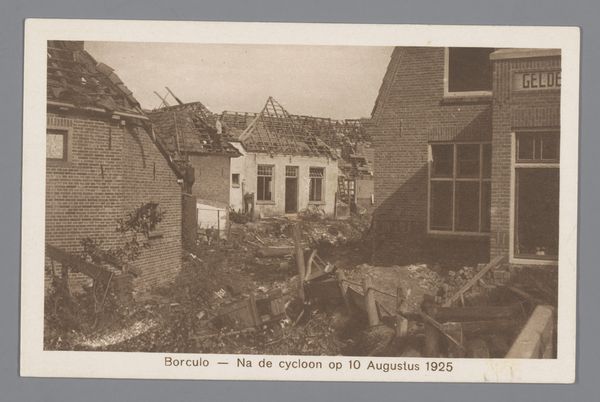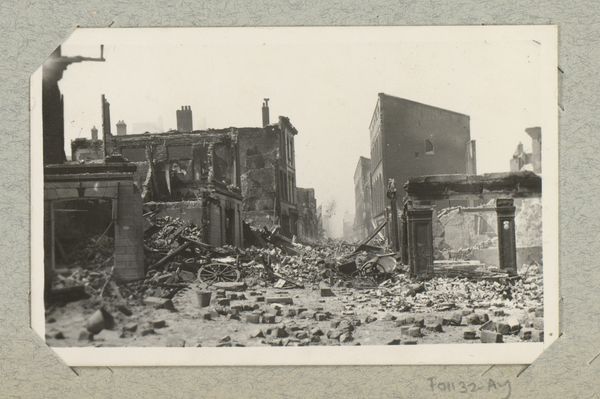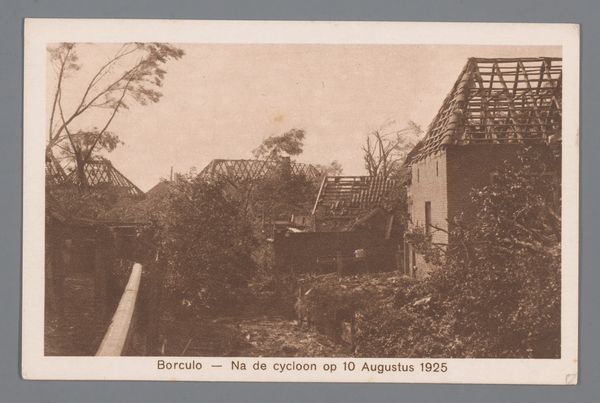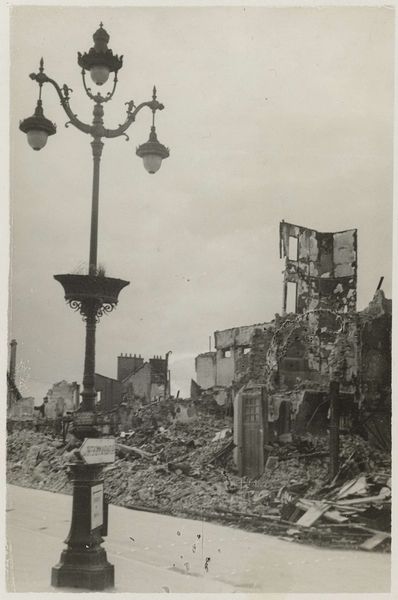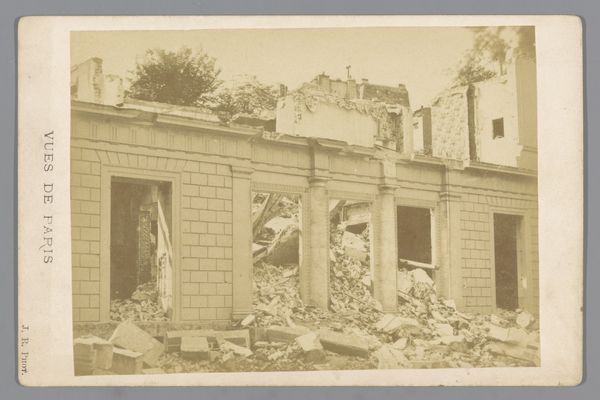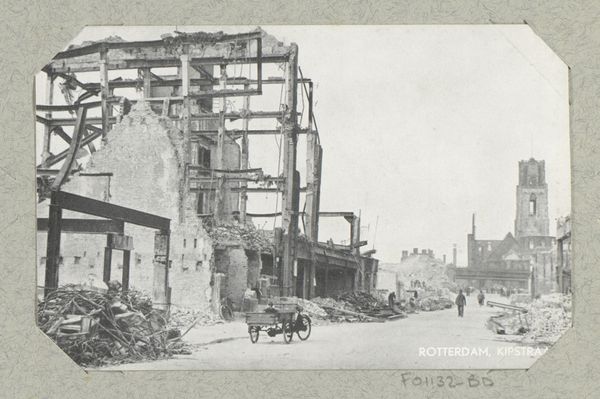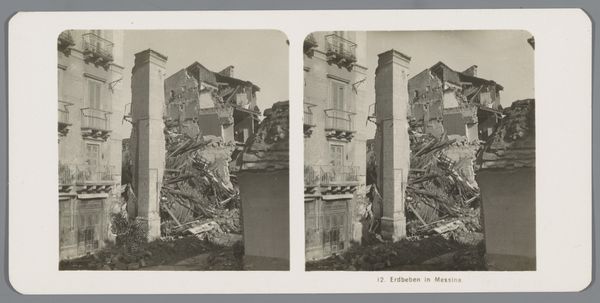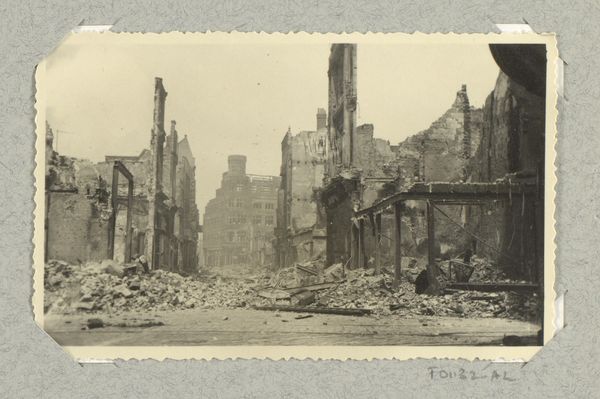
print, photography, gelatin-silver-print
# print
#
street-photography
#
photography
#
gelatin-silver-print
#
realism
Dimensions: height 9 cm, width 14 cm
Copyright: Rijks Museum: Open Domain
Editor: Here we have a gelatin silver print, a photograph actually, titled 'Borculo -- After the Cyclone of August 10, 1925' by Weenenk & Snel. It feels stark, and overwhelmingly sad. All that rubble! What's your take on this image, I mean, what stands out to you? Curator: Well, you feel that starkness, don’t you? It hits you right away. And the real skill here, beyond just documenting the scene, is the way they’ve captured… well, it's not just the aftermath, but the quiet resilience, I think. That stoic determination in the people, going about clearing the mess, almost as if to say, 'Nature throws a tantrum; we clean it up.' Do you notice that it’s like a stage? A human stage setting of disaster and people rebuilding their surroundings. And consider this – what does it mean to photograph devastation? Editor: A stage – that’s an interesting way of framing it! I was just focused on the destruction itself, the broken rooftops and piles of debris. But a stage suggests a story… or many stories. I guess the choice to focus on the figures cleaning up rather than just the ruin is important. Do you think that was a deliberate decision by the photographers? Curator: Oh, absolutely. They chose to frame the devastation with people. There are some decisions a photograph demands and suggests. By showing those figures – those tiny figures amidst so much chaos – they highlight the indomitable spirit. It asks a bigger question, something like "how much can people recover?". Think, the human-scale labour. That’s important! The light as well—that quiet sort of day in the aftermath. And beyond the realism style you find listed here, don’t you feel like it transcends that? Editor: I do, now that you mention it. It's not just a record; there's something profoundly human conveyed in it. I came in thinking it was just a photo of destruction, but you've shown me it's a story of resilience. Curator: And the beautiful thing about art, isn't it? It has those surprises ready for us, if only we pause to look deeper and ask questions about not just the *what*, but also the *why*.
Comments
No comments
Be the first to comment and join the conversation on the ultimate creative platform.

